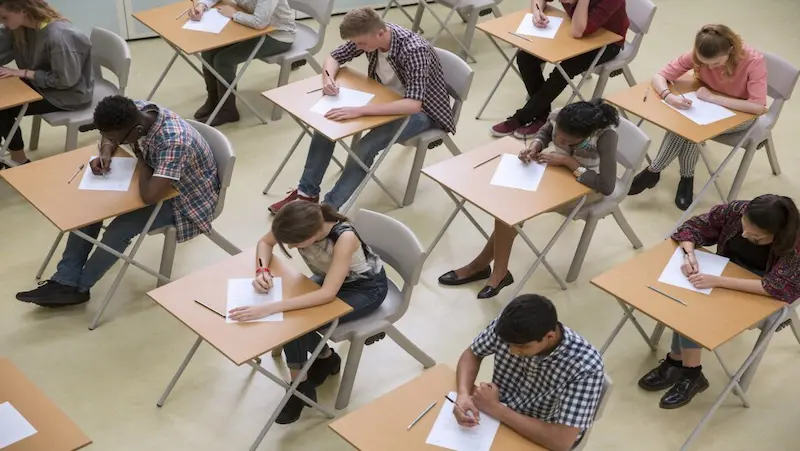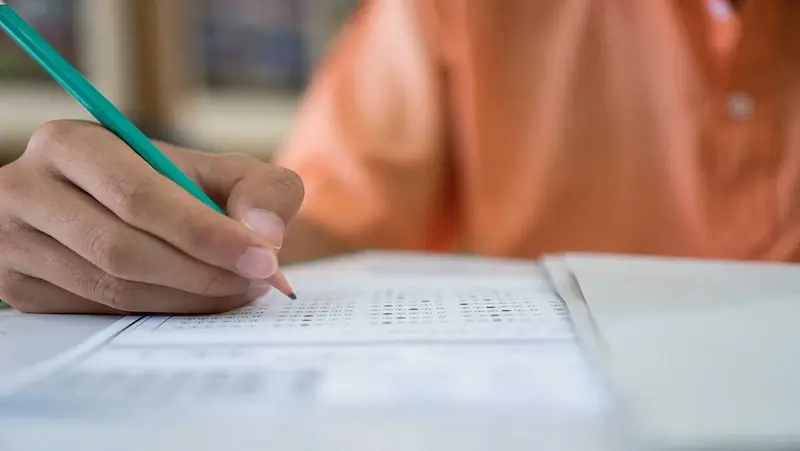Standardized testing is a topic that has garnered both attention and debate in education and beyond. It’s a way to measure and compare the knowledge and abilities of individuals on a level playing field, but it also raises questions about fairness and the true reflection of one’s capabilities. In this introduction, we will delve into the world of standardized testing, exploring its purpose, significance, and the various perspectives that surround it. Whether you’re a student preparing for an important exam or simply curious about the impact of these assessments, this exploration will provide you with valuable insights into this multifaceted subject.
Table of contents
Types of Standardized Tests
When it comes to standardized tests, it’s essential to understand that they aren’t a one-size-fits-all deal. There are various types of standardized tests, each serving a unique purpose and having distinct characteristics. In this segment, we’ll delve into two fundamental distinctions: Achievement Tests vs. Aptitude Tests and High-Stakes vs. Low-Stakes Tests.

Achievement Tests vs. Aptitude Tests
Achievement Tests, as the name suggests, measure what you’ve learned or accomplished in a particular subject or area of knowledge. They assess your proficiency in a specific subject, such as math, science, or language. Think of them as a snapshot of your current knowledge and skills in a particular field. The results help educators evaluate your academic skills performance and identify areas where you may need improvement.
On the other hand, Aptitude Tests evaluate your potential to acquire new skills or excel in future endeavors. These tests don’t focus on what you’ve learned; instead, they assess your natural abilities and aptitudes. They are often used in career planning assessments to determine your suitability for certain professions or educational programs. Aptitude tests aim to predict your ability to succeed in areas you may not have encountered before.
High-Stakes vs. Low-Stakes Tests
Standardized tests can also be categorized based on the stakes involved. High-stakes tests have significant consequences attached to their results. These consequences could include admission to prestigious universities, professional licensure, or even job opportunities. The pressure associated with high-stakes tests can be intense, as the results can significantly impact your future prospects.
In contrast, Low-Stakes Tests have fewer immediate consequences. These tests are typically used for diagnostic purposes or to gather data for educational research. While they may still be important, the outcomes generally don’t carry life-altering implications. Low-stakes tests are often administered in classrooms to assess student progress or to inform instructional strategies.
The Pros and Cons of Standardized Testing

Benefits of Educational Assessment
1. Objective Measurement: One of the key advantages of standardized tests is their objectivity. They provide a consistent and impartial way to evaluate students’ knowledge and skills, making it easier to identify areas where improvement is needed.
2. Data-Driven Decision Making: Standardized test results offer valuable data that educators and policymakers can use to make informed decisions. This data can help allocate resources effectively, implement targeted interventions, and improve curriculum development.
3. Accountability: Standardized testing can hold schools and educators accountable for their performance. It encourages transparency and ensures that schools are meeting certain standards, ultimately benefiting student life hacks and parents.
Criticisms and Limitations
1. Narrow Focus: Critics argue that standardized tests often have a narrow focus, assessing only a limited range of skill development and knowledge. This can lead to a “teaching to the test” mentality, where educators prioritize test preparation over a well-rounded education.
2. Inequality: Standardized testing can exacerbate educational inequalities. Factors like socioeconomic status and access to test preparation resources can influence test scores, making it challenging to draw fair comparisons between students and schools.
3. Stress and Anxiety: High-stakes standardized testing can place enormous stress and anxiety on students. The pressure to perform well can lead to negative psychological effects and hinder the learning experience.
The Standardized Testing Process

Test Development and Validation
The journey begins with the creation of the test itself. Skilled educators, content specialists, and psychometricians work collaboratively to craft questions that accurately assess the desired knowledge and skills. This process involves rigorous research, item writing, and review to ensure that the questions are both relevant and fair.
Validation is a critical step, where the test is piloted and analyzed to verify its reliability and effectiveness. This phase helps ensure that the exam preparation tips genuinely measure what it intends to, helping to maintain its credibility and fairness.
Test Administration and Security
On test day, meticulous planning and strict security protocols are paramount. Test centers and proctors adhere to specific guidelines to maintain a controlled testing environment. These measures are put in place to prevent cheating or any unfair advantages.
Test-takers are also expected to follow strict rules to uphold the integrity of the exam. This includes not bringing unauthorized materials, not engaging in dishonest practices, and adhering to time limits.
Scoring and Reporting
Once the exams are completed, the scoring process begins. Sophisticated algorithms or human scorers, depending on the test, evaluate the responses. These scores are then converted into a standardized format that allows for meaningful comparisons among test-takers.
The final step is reporting the scores to the individuals and institutions that rely on them. This information can be crucial for college admissions, job applications, and educational assessments, helping stakeholders make informed decisions.
Standardized Testing and Educational Equity

The Achievement Gap
The Achievement Gap is a stark reminder of the uneven playing field in our education system. It highlights the differences in academic performance between students from various racial, ethnic, and socioeconomic backgrounds. Standardized tests, initially designed to be fair and impartial, sometimes accentuate these disparities, rather than alleviate them.
Bias in Standardized Testing
One of the most significant criticisms of standardized testing is the presence of inherent biases. These biases can stem from culturally insensitive questions, socio-economic factors, and even linguistic nuances. These biases create hurdles for disadvantaged students, making it more challenging for them to excel.
Efforts to Promote Fairness
Thankfully, many educators, policymakers, and organizations are committed to addressing these issues. Efforts to promote fairness in standardized testing include revising test content to be more culturally relevant, providing accommodations for students with disabilities, and implementing outreach programs to underserved communities.
Scoring and Reporting
Another aspect of standardized testing is how scores are reported and interpreted. While scores can provide valuable information, they should not be the sole determinant of a student’s potential or future success. It is crucial to consider other factors, such as teacher recommendations, extracurricular activities, and personal development growth when evaluating a student’s capabilities.
International Standardized Testing

PISA and TIMSS: Unveiling Global Insights
PISA (Programme for International Student Assessment) and TIMSS (Trends in International Mathematics and Science Study) are two prominent players in the world of global assessments. These tests go beyond mere rote learning and focus on evaluating students’ problem-solving abilities, critical thinking skills, and real-world application of knowledge.
PISA, managed by the Organisation for Economic Co-operation and Development (OECD), assesses the literacy in reading, mathematics, and science of 15-year-olds from around the world. On the other hand, TIMSS, led by the International Association for the Evaluation of Educational Achievement (IEA), measures the mathematics and science knowledge of students in grades four and eight.
Comparing Education Systems: What’s the Score?
One of the remarkable aspects of international standardized testing is its ability to provide a comparative snapshot of how education systems fare on a global scale. By examining the performance of students from diverse backgrounds, cultures, and economic contexts, these assessments highlight both areas of excellence and areas that need self-improvement.
Through PISA and TIMSS, we can identify countries that excel in specific subjects or pedagogical methods. For instance, Finland often shines in PISA rankings due to its holistic education approach, while East Asian countries often perform exceptionally well in TIMSS, showcasing their strong math and science foundations.
Impact on Educational Policy: Catalyst for Change
The results of these global assessments are not just numbers on a report card. They have a profound impact on educational policies and practices worldwide. When a country’s education system lags behind in international rankings, policymakers are prompted to reevaluate their strategies.
Governments and education authorities often turn to successful nations for inspiration and best practices. This process of cross-pollination can lead to innovative reforms and a renewed focus on improving teacher quality, curriculum design, and educational equity.
The Future of Standardized Testing

Trends in Assessment
One significant trend in standardized testing is the shift towards more holistic evaluations. Traditional exams that solely measure rote memorization are giving way to assessments that gauge critical thinking, problem-solving, and practical application of knowledge. This change reflects a growing recognition that real-world success requires more than just memorizing facts.
Another notable trend is the integration of technology. Online testing platforms and adaptive assessments are becoming increasingly popular, offering a more personalized and efficient testing experience. These tech-driven advancements allow for quicker feedback and adaptation to individual learning needs.
Standardized Testing Post-Pandemic
The COVID-19 pandemic brought about significant disruptions to standardized testing. Test cancellations, remote testing options, and the suspension of test requirements for college admissions underscored the need for flexibility in assessment. Moving forward, the post-pandemic world will likely see a blend of in-person and online testing options, making assessments more accessible and adaptable to various circumstances.
Potential Reforms
Reforms in standardized testing are on the horizon. Some advocate for reducing the emphasis on high-stakes testing in education, arguing that it can lead to undue stress and narrow curriculum focus. Others suggest exploring alternative assessment methods, such as project-based assessments or portfolios, which provide a more comprehensive view of a student’s abilities.
Conclusion
In conclusion, while standardized testing has long been a fundamental tool in assessing academic achievement performance, it is crucial to recognize its limitations and consider alternative methods of evaluation. We must strike a balance between accountability and the individual growth and potential of students.
Standardized tests should complement, not overshadow, a holistic approach to education that values creativity, critical thinking, and personal development. It’s time to revisit the role of standardized testing in our education system, aiming for a more equitable and well-rounded approach that empowers all learners.
To get your hands on more such articles, educational content, and free resources on coding for kids, robotics courses, game development, etc., check out the BrightCHAMPS Blog Page now!
Frequently Asked Questions
A1. Standardized tests help educators assess students’ knowledge and skills uniformly across different schools and regions, aiding in curriculum improvement and accountability.
A2. Standardized tests can influence students’ educational paths by shaping curriculum priorities and college admissions decisions based on their performance.
A3. Critics argue that standardized tests can create stress, encourage “teaching to the test,” and may not fully capture a student’s abilities or potential.
A4. Standardized tests are developed through rigorous processes involving item creation, pilot testing, and statistical analysis to ensure reliability and validity.


 We are an army of educators and passionate learners from BrightChamps family, committed to providing free learning resources to kids, parents & students.
We are an army of educators and passionate learners from BrightChamps family, committed to providing free learning resources to kids, parents & students.








